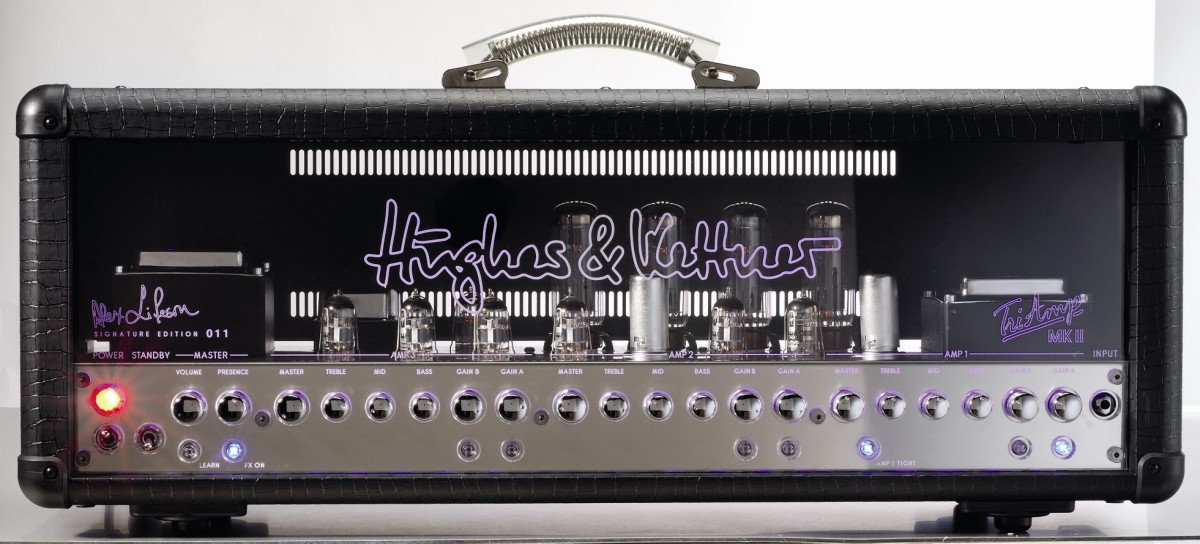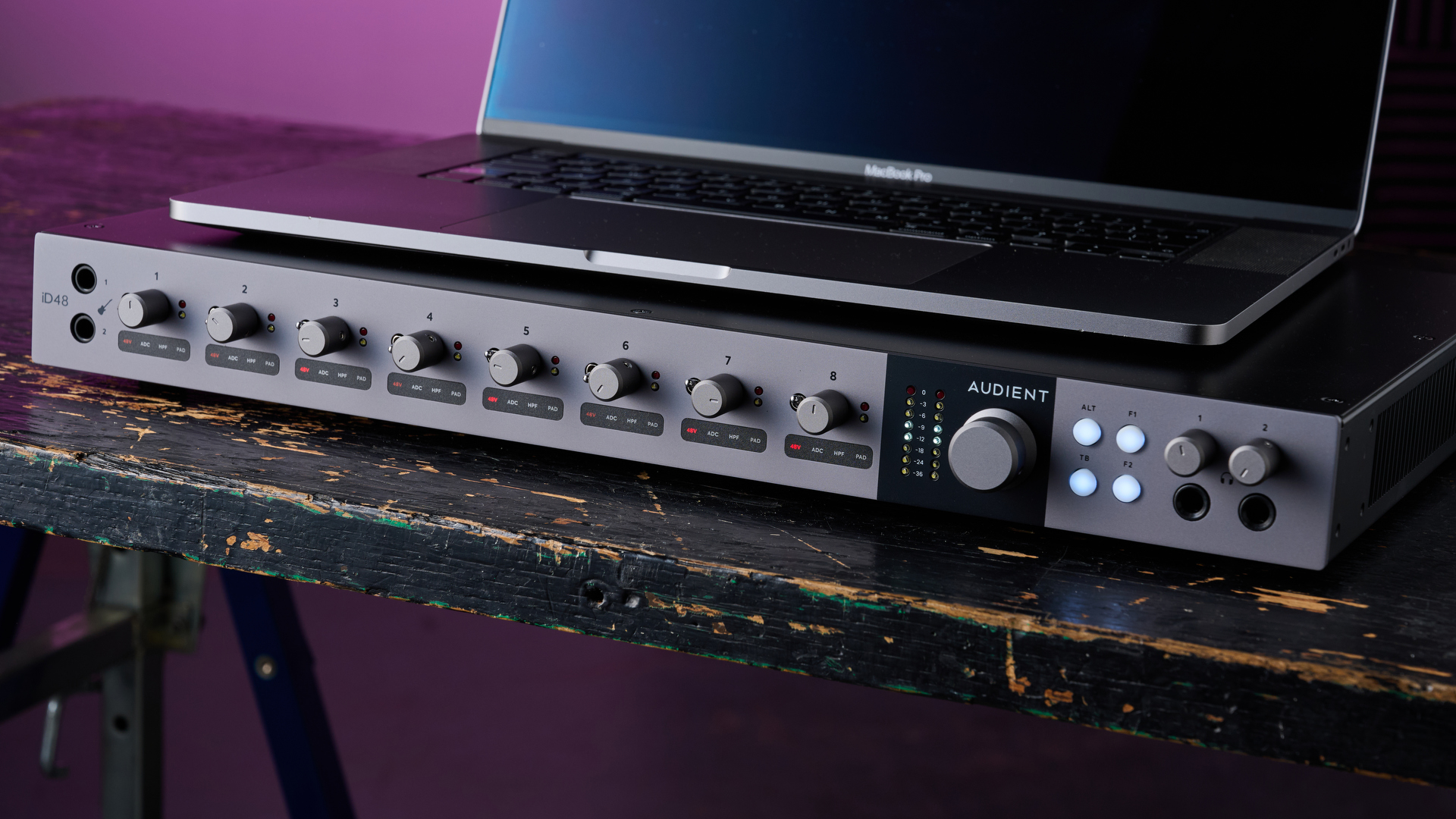MusicRadar Verdict
A truly awesome amp for a truly awesome price. Rush lovers will be queuing up for its blend of looks, tone and rarity.
Pros
- +
Superlative tone and looks. Easy to use. Adds some onstage sex appeal.
Cons
- -
May have less appeal for non-Rush fans, although the features are the same as a regular TriAmp MkII.
MusicRadar's got your back
Hughes & Kettner amps might look like science fiction, but the German firm knows a think or two about classic tone and valves.
This is nicely showcased by the very special Alex Lifeson Signature Edition of the company's flagship TriAmp head.
H&K decided to issue this special amplifier to celebrate 30 years of collaboration between the company and the Rush guitarist - who's their highest-profile endorsee.
The amp is exceptionally well built and finished to a very high standard. It's electronically complex beast and, from necessity, the internals are all PCB-mounted.
As we've come to expect from H&K, the quality of components and soldering is first class - the boards themselves are on a par with the world's best and the steel chassis is equally tough and rigid.
The plywood sleeve is covered in thick vinyl with a unique love-it-or-hate-it imitation crocodile pattern.
The most visually striking feature of the amp's styling is H&K's trademark illuminated Perspex front plate, which is lit up by a row of top-mounted LEDs when the mains is switched on.
It's a stunning effect especially as the LEDs are purple for the 'Alex' rather than the standard blue.
It's also very practical, making all the controls easy to see and adjust under any lighting conditions.
In use
The amp has been carefully tweaked to Alex's exact requirements and Rush devotees love that the first 500 have individually numbered front panels and also include a special Rush CD, an R30 tour booklet and a certificate signed by Alex himself.
In keeping with the spirit of Lifeson's charitable work, Hughes & Kettner is also donating $50 from the sale of each signature amp to UNICEF, which is a nice gesture in today's not-so-nice world.
On the controls front, the 'Alex' is no different from a regular MkII TriAmp, which is to say that it's an incredible piece of work.
The TriAmp has three basic channels, but there's an awful lot more going on inside it, as you might guess from the whopping valve count of 13.
Each channel is designed as a completely different amplifier - having its own preamp circuit, master volume, three-band EQ and dual switchable gain controls for rhythm and lead use.
This gives you three distinctly different voicings and six footswitchable sounds in total.
Add in global master volume and presence and you can count 20 front panel rotary controls. Yet, despite this, the TriAmp is actually very easy to dial in and use.
Around the back you'll find more pro features, including a locking nine-pin 'D' connector for the TriAmp's stageboard, with half-power switching and insert points for the preamp and power amp in addition to the TriAmp's effects loop.
This can be switched in or out of circuit from the front panel or footswitch and has level switching, serial/parallel modes and a mix level control.
There's also a built-in Red Box speaker emulation circuit with a balanced XLR output for connecting the 'Alex' directly to a mixing desk without the need for microphones, either for recording or live PA use.
While the TriAmp doesn't come with it built in, MIDI can be enabled by purchasing a separate plug-in module, thus boosting this amp's versatility even further for those players who want it.
Sounds
At almost double the price of H&K heads such as the Trilogy, you'd expect the Alex Lifeson Signature Edition TriAmp to be rather special and it is.
As mentioned, we're effectively dealing with three amps in one box, each with two footswitchable sounds.
Amp number one is primarily for clean stuff and delivers a whole gamut of classic 'Blackface' and 'Tweed'-influenced tone.
This channel incorporates a useful switch called 'tight', which reduces bass emphasis for a much snappier feel.
If you're using a 4 x 12 cabinet, bass frequencies can often end up sounding a little too flabby for decent clean sounds; the tight switch changes this to give a response more like that of an open-backed 2 x 12.
You can use the higher-gain voicing here to really sing the blues; plug in a Strat or Tele and endless twang is on tap.
Amp number two is where you go for your favourite British tones; from classic 80s rock to thrash, it's all here, complete with a sweet, polished edge.
Amp number three puts some terrific lead sounds under your command, which are tightly defined and have a lot of character.
Compared to the regular MkII TriAmp, this signature amp's lead tones are subtly different, maybe a little sweeter and with a touch more clarity at higher volume.
There's massive distortion available here, but the most rewarding effects come from backing off the gain control to let the guitar's natural tone come through.
The sustain and definition that you'd expect for a great lead sound is still there at lower gain levels and, with the masters pushed up a little more, the 'Alex' really starts to sing.
Summary
In the super-amp league, the Alex Lifeson Signature Edition TriAmp MkII is easily capable of blowing most of the competition away.
Even at this lofty price, we reckon it's one of the top 10 amps in the world at the moment.
We'd urge players who want the best and can afford it to think 'outside the box' and put it on their audition list without hesitation.
Guitarist is the longest established UK guitar magazine, offering gear reviews, artist interviews, techniques lessons and loads more, in print, on tablet and on smartphones Digital: http://bit.ly/GuitaristiOS If you love guitars, you'll love Guitarist. Find us in print, on Newsstand for iPad, iPhone and other digital readers
“He’s all right, he’s on tip-top form. We can’t wait": Noel and Liam Gallagher perform together behind closed doors for the first time in 16 years
Fantastic (free) plugins and how to use them: Full Bucket FB-3300
“It has the ingenious ability to give you easy routing to external hardware with no re-patching”: Audient iD48 review











